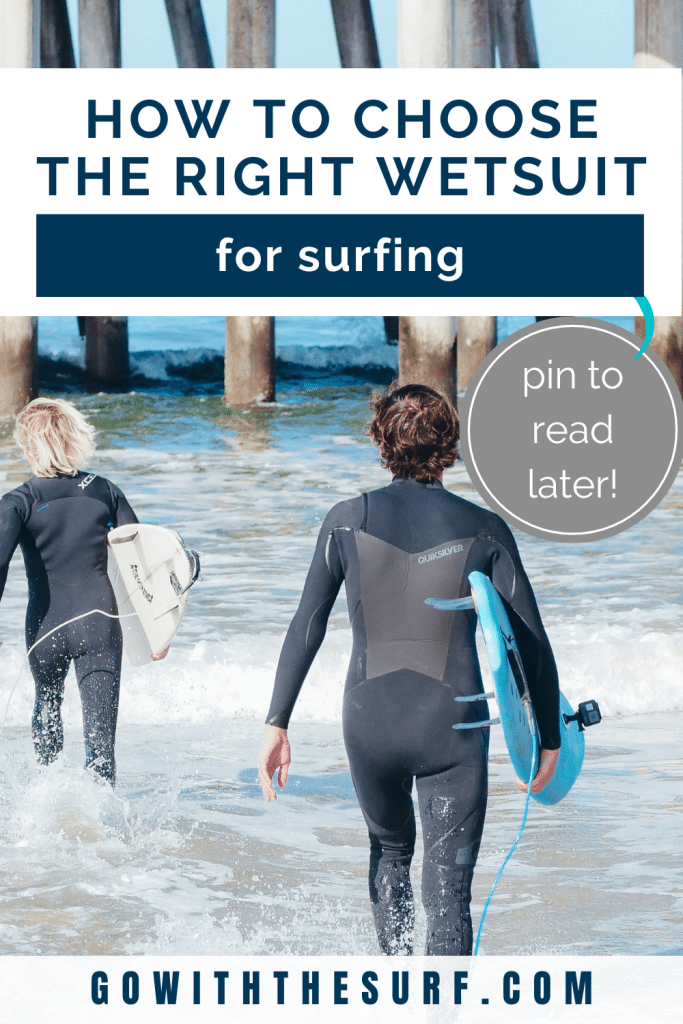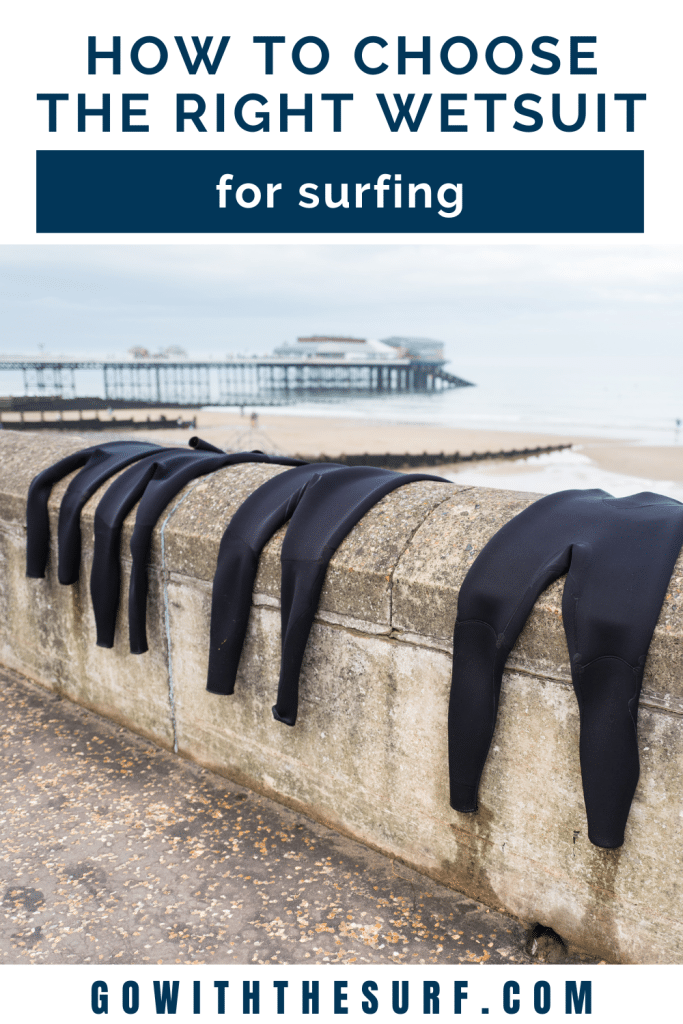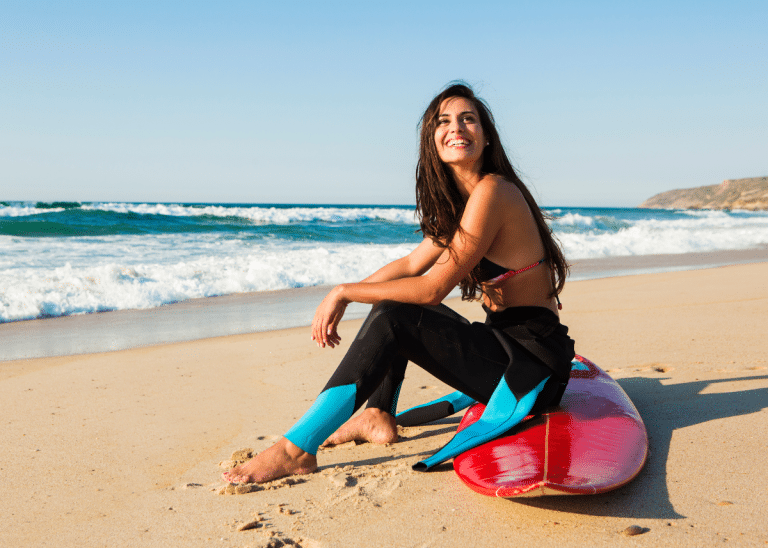How to Choose the Right Wetsuit for Epic Surfing Sessions
When you’re ready to ride the waves, having the perfect wetsuit can totally change how you experience surfing. With tons of wetsuits out there, deciding on the best one for your needs might seem overwhelming.
After all, you’ll want to select the ideal wetsuit to “suit” various surf conditions (pun intended 🤣).
Here’s a simple guide to help you choose the ideal wetsuit for each type of surf, so you can focus on catching those epic waves!
This post contains affiliate links, which means I receive a small commission, at no extra cost to you, if you make a purchase using this link. Please see my disclosure for more details.
Types of Wetsuits
Obviously, choosing the right wetsuit is super important before your surfing session. But what types of wetsuits are available? Let’s check out the different types to help you decide based on the water conditions you’ll face.
- Full Suit: A full suit, also called a steamer, is perfect for cold water. It covers you from neck to ankles and wrists, keeping you warm and cozy.
- Shorty (Spring Suit): Ideal for milder temps, covering your torso and upper legs. It’s great for warmer conditions while still offering some insulation.
- Rashguard/Top: For warm or tropical waters, these lightweight tops provide protection without the bulk of a wetsuit.
I always wear a full suit since I’m in Portugal and surfing the frigid Atlantic waves.
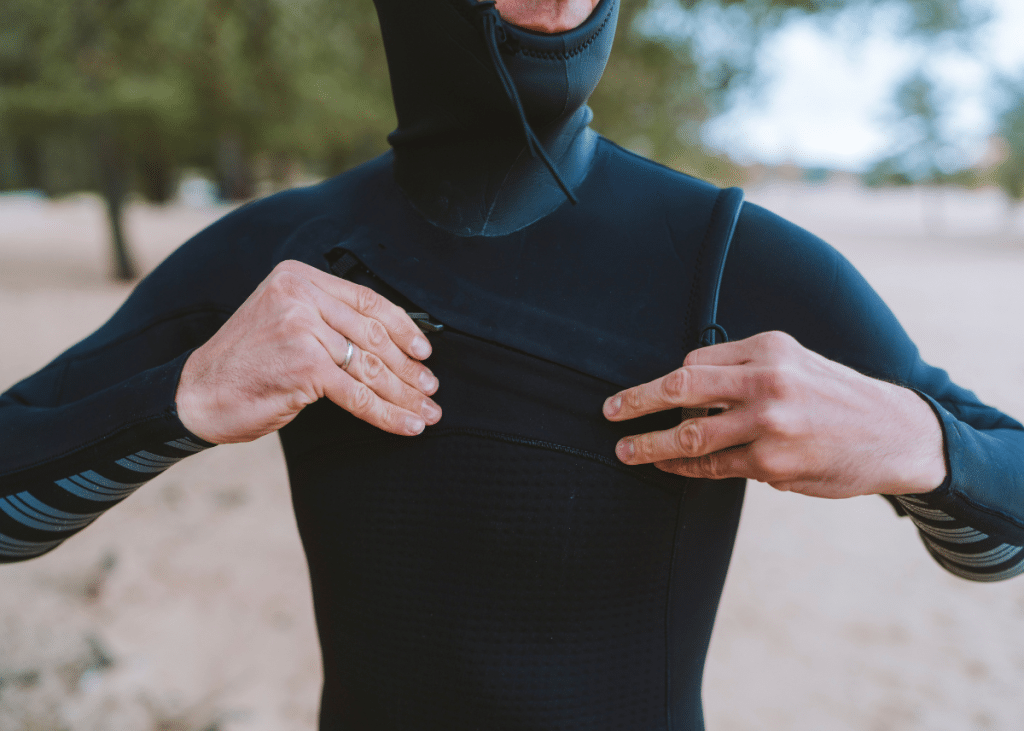
Wetsuit Thickness
Don’t forget to think about wetsuit thickness when choosing your ideal one. The thickness affects how warm and comfy you’ll be in the water. Here’s a simple guide:
Wetsuit Thickness Ratings
Wetsuit thickness is measured in millimeters, typically represented in a format like 3/2mm, which indicates the thickness of the material in different parts of the wetsuit.
The first number refers to the thickness of the neoprene in the torso area, while the second number pertains to the thickness in the arms and legs.
So for my husband and I, we wear a 4/3 wetsuit all-year-round in Portugal. My wetsuit is 4 mm around my torso and 3 mm around my arms and legs.
Warm Water (above 75°F)
For warm water conditions where the temperature is above 75°F, a thin wetsuit of around 1-2mm is ideal. A wetsuit with minimal thickness provides flexibility and allows for unrestricted movement while providing some insulation against cooler waters.
Moderate Water (60-75°F)
In moderate water temperatures ranging from 60-75°F, a wetsuit with a thickness of 3/2mm or 4/3mm is suitable. This range offers a balance between warmth and flexibility, keeping you comfortable during longer surf sessions in cooler waters.
Cold Water (below 60°F)
In colder water conditions below 60°F, opt for a thicker wetsuit with a range of 5/4mm to 6/5/4mm. These wetsuits provide superior insulation to keep you warm in frigid waters, ensuring you can surf comfortably in colder climates.
Tips on Choosing Your Wetsuit Thickness
- Consider your cold tolerance and how long you plan to stay in the water
- When in doubt, it’s better to lean towards a slightly thicker wetsuit to ensure adequate warmth.
- Remember that a well-fitting wetsuit is essential for thermal efficiency. Prioritize comfort and flexibility when selecting the right thickness.
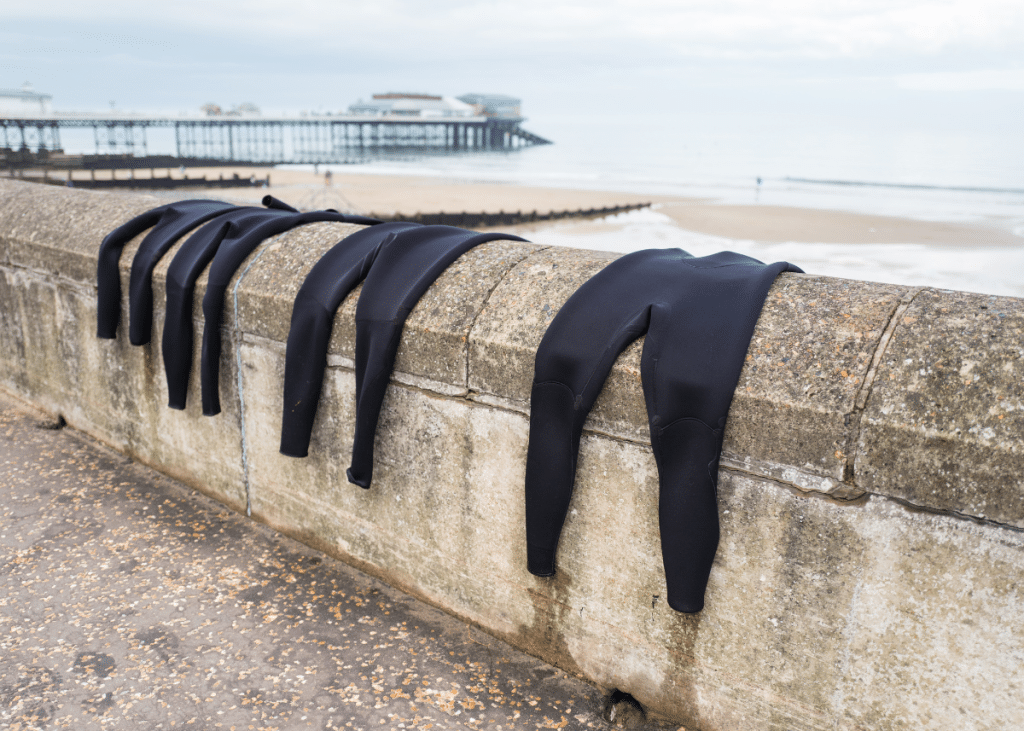
Features to Look For in a Wetsuit
Flexibility and Mobility
Flexibility is important for unrestricted movement while surfing. Look for wetsuits made from high-quality neoprene and designed with strategic paneling to enhance flexibility. Smooth skin neoprene on the exterior also aids in reducing drag in the water, allowing you to paddle and move freely.
Warmth and Insulation
To stay comfortable in varying water temperatures, consider the wetsuit’s warmth and insulation properties. Thicker neoprene provides better insulation but can hinder movement. Choose the appropriate thickness for your typical surfing conditions as discussed above. Additionally, linings such as thermal fleece help retain body heat, keeping you warm even in colder waters.

Durability and Longevity
Investing in a durable wetsuit can save you money in the long run. Look for reinforced stitching and durable materials in high-wear areas like the knees and elbows. Quality construction not only ensures longevity but also maintains the wetsuit’s performance over time.
Fit and Comfort
Choose a wetsuit that fits snugly but allows for easy movement. Pay attention to size guides provided by manufacturers. Consider adjustable features like neck closures and wrist seals for a customized fit that keeps water out.
Sustainability
If you’re into the eco-friendly surfing movement, consider a wetsuit made from eco-friendly materials, such as Yulex!

Surf Conditions and Wetsuit Recommendations
Now we know the types and features of wetsuits. Here are some recommendations tailored to the various surf environments you may encounter. Feel free to focus on the surf conditions you will mostly surf in.
Cold Water Surfing
When braving the chilly waters, there’s no question that you should opt for a thick wetsuit. Consider a 5/4 or 4/3mm wetsuit with added features like sealed seams and thermal lining to retain body heat effectively. These wetsuits act as a snug barrier against the cold. This way you can extend your surfing sessions in frosty conditions without succumbing to the low water temperatures.
Warm Water Surfing
For warmer waters, go for a lightweight wetsuit with a 3/2mm thickness. This thickness will provide adequate insulation while ensuring flexibility for unrestricted movement. Additionally, prioritize wetsuits with UPF sun protection to shield your skin from harsh UV rays. This is especially important in tropical regions where the sun’s intensity is high.
Tropical Surf Destinations
In hot and humid climates, opt for wetsuits crafted from breathable materials that offer moisture-wicking properties. This helps keep you cool and comfortable throughout your surf sessions. Look for wetsuits with added sun protection features to prevent sunburn and skin damage under the scorching tropical sun.
Windy and Overcast Conditions
When facing windy and overcast weather, combat wind chill by layering with a versatile wetsuit system. Pair a 3/2mm wetsuit with a neoprene jacket or vest to combat the chilly breeze while still maintaining mobility. This layered approach ensures you stay warm and protected even in blustery conditions.
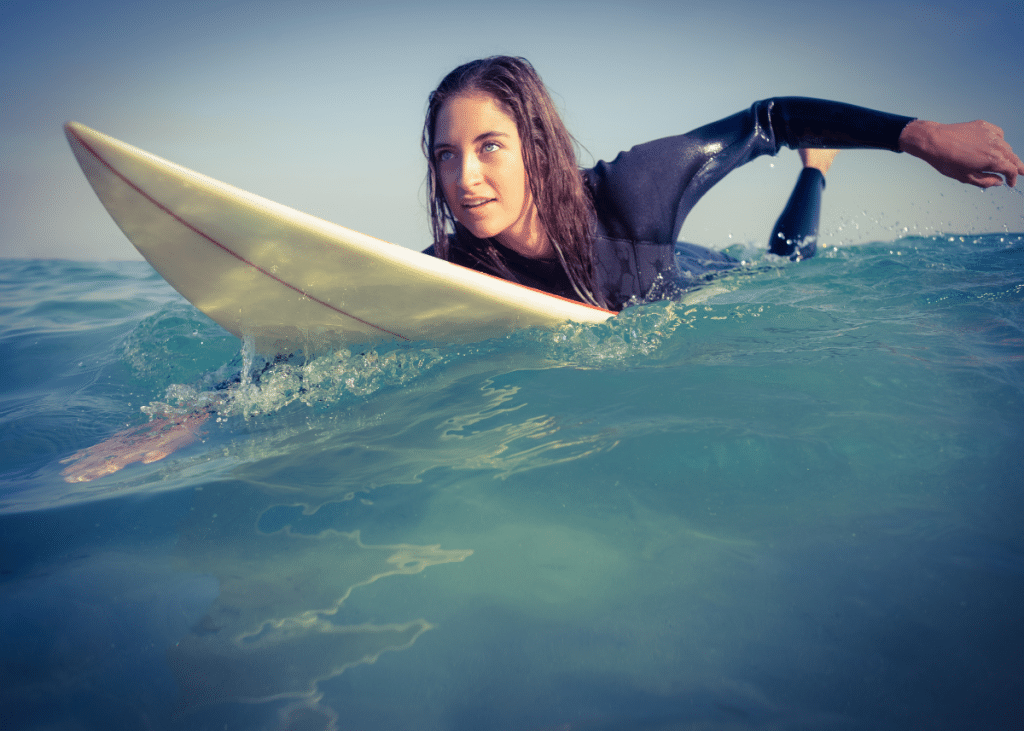
Frequently Asked Questions
What should I look for in a wetsuit if I’m a beginner?
Choose a thicker wetsuit, around 4/3mm, as it offers more buoyancy and warmth. This thickness is versatile and suitable for various water temperatures. Thus, it is ideal for beginners who are still learning their preferences and needs in different surf conditions.
How do I select a wetsuit for cold water surfing?
For cold water, typically below 60°F, opt for a wetsuit that’s at least 5/4mm to 6/5mm thick. Ensure it has sealed seams, and consider a hooded model to retain body heat. Thermal lining can also add comfort and warmth.
What wetsuit thickness is best for summer surfing?
In warmer waters, above 65°F, a thinner wetsuit, such as a 2mm spring suit or a shorty, is sufficient. These wetsuits provide flexibility and comfort without overheating.
Does the type of stitching on a wetsuit make a difference?
Yes, stitching affects both durability and water resistance. Flatlock stitching is okay for warmer water as it lets in a little water. For colder temperatures, look for sealed seams that are glued and blind-stitched to minimize water entry and increase warmth.
How important is the fit of the wetsuit?
Fit is crucial for maintaining body heat and ensuring comfort. A well-fitting wetsuit should be snug but not restrict movement. It should have no loose areas or excessive bunching, particularly in the back, knees, and armpits.
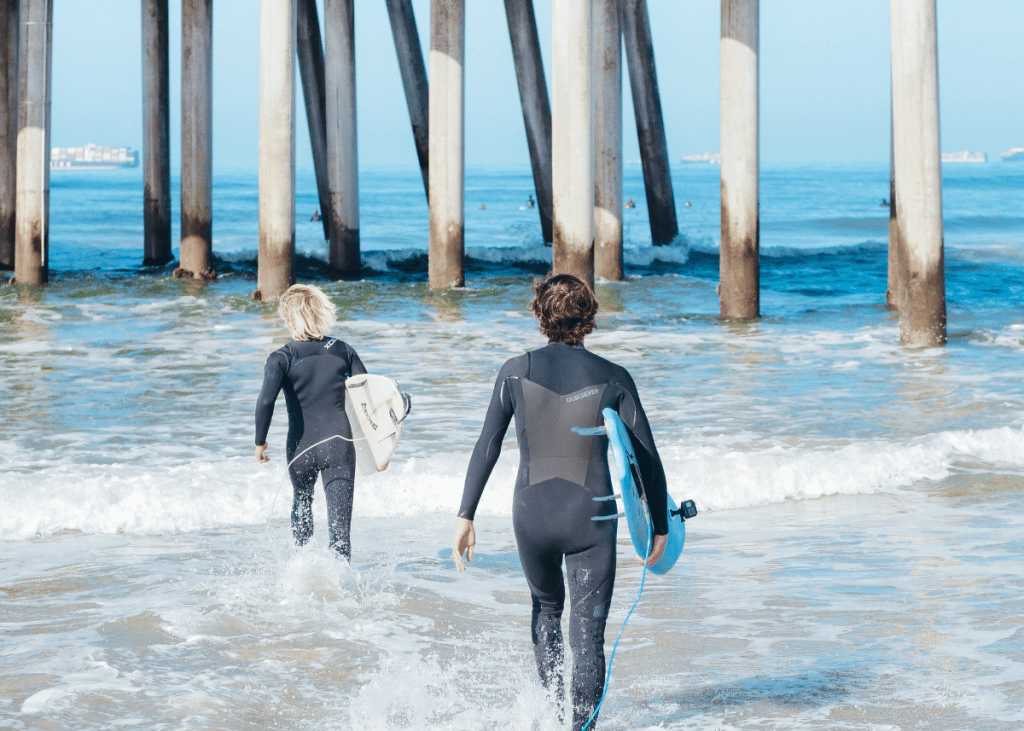
Choosing the Right Wetsuit for You
The right wetsuit that you choose will depend on the surfing conditions you find yourself in. And you might find you will need multiple wetsuits – a thicker one for cold water surfing and a thinner one for warmer weather.
Definitely seek advice from your fellow surfers and local surf shop. They can provide valuable insights to the surf conditions of the area that will narrow down the type of wetsuit you choose.
What kind of surf conditions do you mostly surf in and what type of wetsuit do you wear? Comment below!

Anh
Anh recently retired at the age of 35 and moved to a small surf town in Portugal in 2023. She started surfing as a hobby, but she fell in love with the water sport. She shares her tips and tricks with fellow surfers at Go With the Surf.



